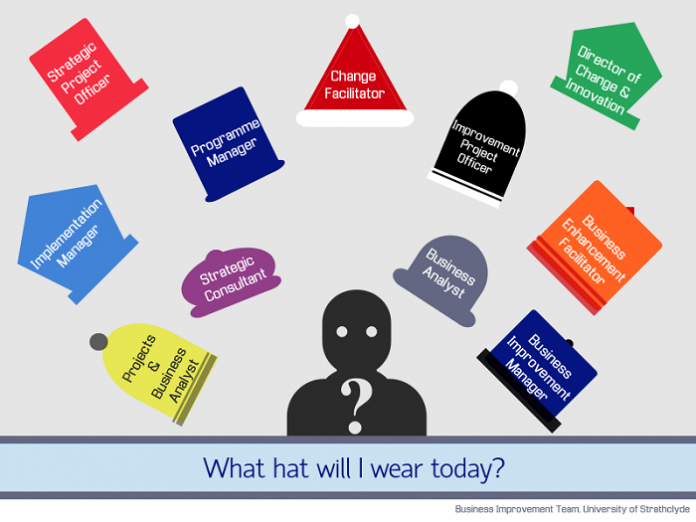A sector-wide survey was launched in April by the University of Strathclyde’s Business Improvement Team to capture feedback on how its Guide to Evidencing the Benefits of Business Process Improvement in Higher Education has enhanced their delivery of change initiatives and how the guide could be improved. Nicola Cairns shares her insight into some of the survey findings.
We recently ran a survey to find out how HE change professionals were using the Evidencing Benefits Guide and how we can improve it. Due to the fantastic support from the Efficiency Exchange, our survey reached a world-wide audience. Thank you Efficiency Exchange! Thank you also to the 33 institutions who responded to the survey. The results have provided us with great insight and helped shape the design phase of our Leadership Foundation project.
So what did the survey tell us? One of the first things that I noticed from the responses was the large variation in the title given to our roles, and by extension how we define what we do. In all of the responses, there was only one duplicate job title. This made me think of a recent blog by hefce that questioned if HE professionals involved in change initiatives connected with the phrase “Business Process Improvement”, and if confusion over terminology was creating a barrier to using the Evidencing Benefits Guide.
Is there any meaningful difference between all these job titles? Does it matter if I lead process improvement projects while others deliver service redesigns or manage process performance reviews? Regardless of the particular hat we wear, surely we are all striving for the same goal; to implement improvements across our institutions that deliver benefits which contribute to achieving the strategic objectives and that can be included in our institutional reporting.
We think that the Evidencing Benefits Guide offers a consistent way of measuring and reporting the benefits of our projects irrespective of what our job title is. The feedback from the survey will help us consider how to overcome any terminology obstacles, and get more HE change practitioners using the approach. The survey respondents also provided lots of great ideas about what additional resources they would like to see in the guide, which would help them practically implement the approach in their own work. It is likely that using such resources will also help overcome terminology obstacles.
The survey also indicated the extensive range of change and improvement projects that the sector is currently working on. This helps us plan our Leadership Foundation project as it demonstrates which topics are most relevant to our audience, so we can tailor the case studies and exemplars accordingly. But I think this information tells us a little more; the percentage of respondents involved in each project type indicates where we focus most of our energy, but more interestingly, also highlights where we are not working.
Many respondents are working on student services projects such as the admissions process, timetabling, and graduation. Yet no one indicated that they were currently involved in any projects looking at teaching and research processes, or the laboratory and technical services that support them. Given that these are a university’s core business, will such projects form a larger part of our work in the future?
Stay up to date via our website where you can access our newly developed resources in the coming months.








